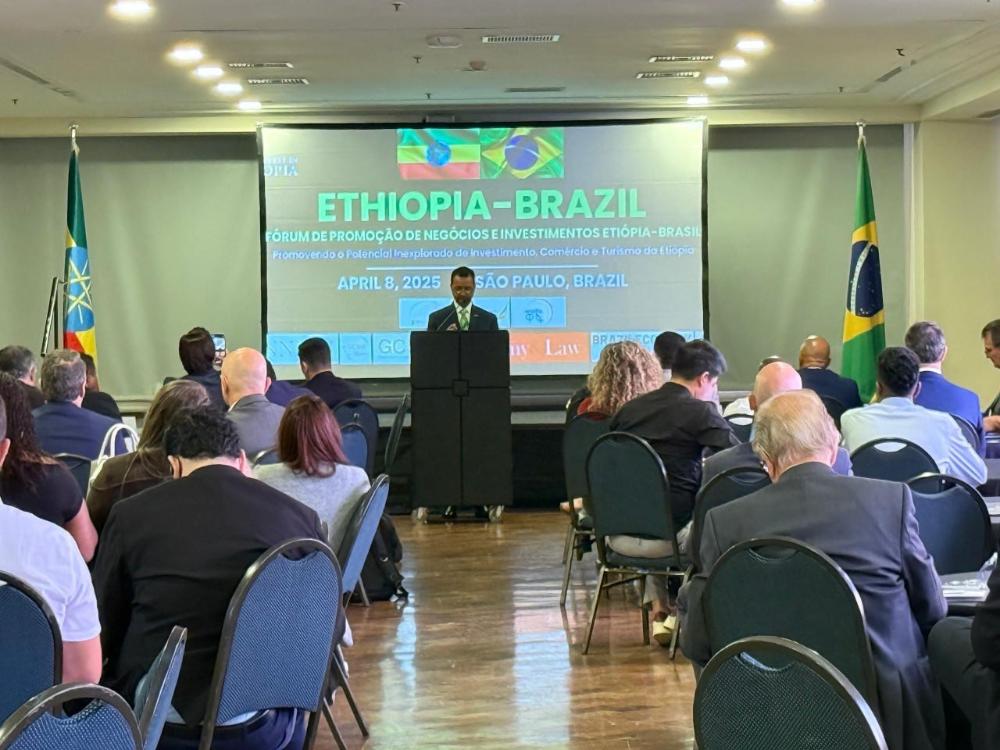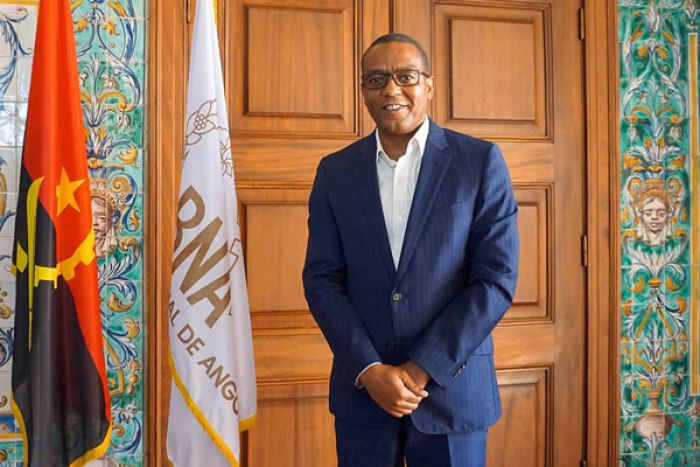AfrikanTrust
In a packed conference room in Addis Ababa, the unmistakable call to action rang clear: Ethiopia is open for business—and it wants Brazil at the table. As the second Ethiopia-Brazil Business and Investment Forum concluded, one thing became evident. Brazil and Ethiopia are separated by oceans and hemispheres. Yet, in Addis Ababa today, both were looking beyond geography to forge a bold new chapter in South-South economic diplomacy.
At the heart of the forum was Ambassador Leuleseged Tadese’s impassioned plea to Brazilian investors. “From agribusiness to renewable energy, Ethiopia offers unparalleled opportunities,” he said, describing Ethiopia as a gateway to Africa’s 1.4 billion-strong consumer market. For a nation eager to transition from aid dependence to economic dynamism, Brazil represents more than just an investor—it symbolizes a partner in resilience, innovation, and shared development goals.
But beneath the diplomatic cordiality and investment pitches lies a deeper story of two emerging economies with complementary strengths—and some formidable challenges. Though not historically close economic partners, Ethiopia and Brazil share surprisingly strong structural affinities. Both are large, populous developing countries navigating the complex terrain of climate change, poverty reduction, agricultural modernization, and industrialization.
Brazil brings to the table its world-renowned capabilities in agribusiness, biofuels, aviation (Embraer), and green technology. Ethiopia, for its part, offers an untapped, youthful labor force, a strategic logistics location on the Red Sea, and a government laser-focused on attracting foreign direct investment (FDI).
The African Continental Free Trade Area (AfCFTA), in which Ethiopia is a key player, creates added allure for Brazilian firms seeking new markets. Combined with Ethiopia’s growing network of industrial parks and export processing zones, the promise is clear. Brazilian companies could use Ethiopia as a production and logistics hub to serve East African and pan-African markets.
Brazil is an agricultural superpower—its agritech and climate-resilient farming practices are globally lauded. Ethiopia, despite its fertile land and varied ecology, has struggled with low productivity, outdated techniques, and vulnerability to drought.
This asymmetry offers space for synergy. From soybean processing and sugarcane ethanol to climate-resilient crops and irrigation infrastructure, Brazilian firms are well-placed to transfer knowledge and technology. Ethiopia, meanwhile, can offer access to arable land, a growing domestic market, and duty-free export privileges to key markets like the European Union (via the Everything But Arms initiative) and the U.S. (under the African Growth and Opportunity Act, or AGOA).
As Ethiopia pushes its Green Legacy Initiative and expands investment in hydropower, solar, and geothermal energy, Brazil’s experience in renewable integration and energy efficiency is more relevant than ever. Brazil has over 80% of its electricity generated from renewable sources, primarily hydropower and biofuels. Ethiopia’s Grand Ethiopian Renaissance Dam (GERD) is already a regional energy game changer. The two countries could collaborate not only on renewable infrastructure development but also on carbon credit markets, climate financing, and sustainable forestry programs.
Ethiopia’s digital economy is at an inflection point. With liberalization under way and a large youth population, the market is ripe for telecoms, fintech, and smart infrastructure. Brazil’s digital startups and hardware manufacturers could find fertile ground to co-develop digital ecosystems and participate in skills transfer and talent development initiatives.
The logistical challenge—a literal continent and ocean between the two—cannot be ignored. With no direct maritime or air freight routes, trade remains costly and slow. But new regional infrastructure investments, such as the Lamu Port-South Sudan-Ethiopia Transport Corridor (LAPSSET) and Djibouti’s modern port system, are steadily changing the equation. Moreover, with Brazil taking over the 2025 BRICS presidency, there’s a timely opportunity to advocate for South Atlantic maritime corridors and digital trade bridges connecting Africa and Latin America.
Crucially, both governments appear politically aligned on the need to decolonize trade patterns. For too long, African and South American countries have traded outward—northward—rather than across the Global South. By intensifying bilateral ties, Ethiopia and Brazil could signal a pivot away from traditional dependencies and towards a new era of mutual, horizontal cooperation.
As Ambassador Leuleseged noted, Ethiopia’s policy reforms under Prime Minister Abiy Ahmed are geared toward creating a “conducive environment” for foreign investors. These reforms include tax incentives, streamlined business registration processes, and state-led infrastructure development—features designed to make Ethiopia more competitive as an investment destination. Brazil, under President Luiz Inácio Lula da Silva, is once again leaning into South-South cooperation and environmental diplomacy, aligning well with Ethiopia’s own development narrative.
Economic ties are only one side of the coin. At the forum, Ethiopia also extended a hand to Brazilian tourists, artists, and academics. Ethiopia’s rich cultural heritage—from Axumite ruins to Lalibela’s rock-hewn churches—presents vast potential for cultural exchange and tourism investment. Likewise, Brazil’s Afro-descendant cultural fabric and its historical ties to Africa create fertile ground for cultural diplomacy, creative industry collaboration, and people-to-people exchange.
The upcoming “Invest in Ethiopia 2025” summit, scheduled for May 12–13 in Addis Ababa, is expected to cement many of the discussions initiated at the Ethiopia-Brazil forum. Brazilian business delegations are expected to explore concrete opportunities, particularly in textiles, agritech, and energy. Still, skepticism remains. Without direct logistics routes, stronger institutional frameworks, and long-term diplomatic engagement, the Ethiopia-Brazil relationship risks becoming another underutilized South-South opportunity.
Ethiopia and Brazil stand on opposite sides of the world, separated by geography but united by ambition. Their emerging relationship represents a blueprint for Global South collaboration—one that prioritizes shared development over extractive trade patterns.
If nurtured carefully, this partnership could become more than a diplomatic novelty—it could evolve into a sustainable, mutually profitable alliance, offering lessons in cooperation, climate resilience, and economic innovation.
As Ambassador Leuleseged aptly put it, “The time to act is now.” For Ethiopia and Brazil, it’s time to turn distance into opportunity—and vision into value.




